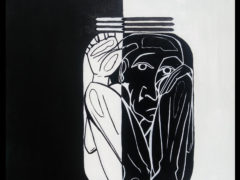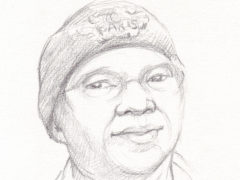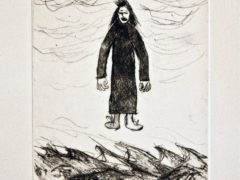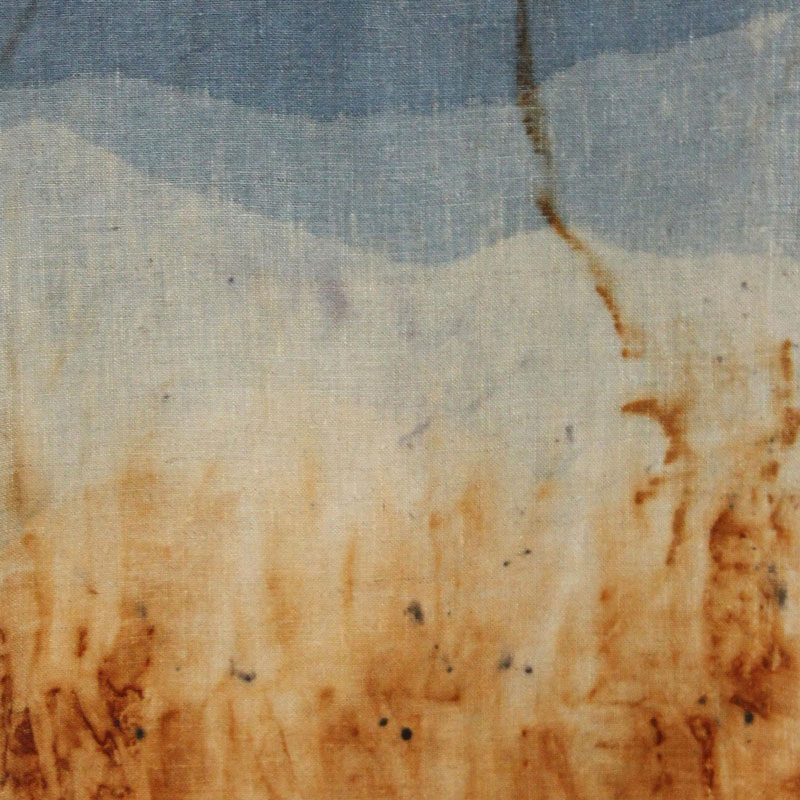
“What is left behind” by Josephine Clarke
In What is left behind, textile artist Josephine Clarke exhibits a group of linen wall hangings made using modern materials, but traditional methods. Using plant-based dyes, she has modified traditional printmaking methods by using the unconventional materials of metal industrial rubbish. See What is left behind in the Corridor August 3 – 27. Can’t make it to the Corridor in person? Check out the video tour of the exhibition on YouTube: https://youtu.be/sDXM5f2_na0
Of her process Clarke writes:
We live in an age of huge transition. The promises made by capitalism in the 19th and 20th centuries are starting to disappear. As an artist in a rural area, I see the dominance and the failures of industrial operations, however, I also see the resilience of nature. I gather my materials from sites of industrial decay. The panels are made using materials gathered from abandoned rail yards, derelict marine vessels, and decommissioned industrial sites near my home in Cape Breton. May we use what is left behind to make a better reality than what was promised.
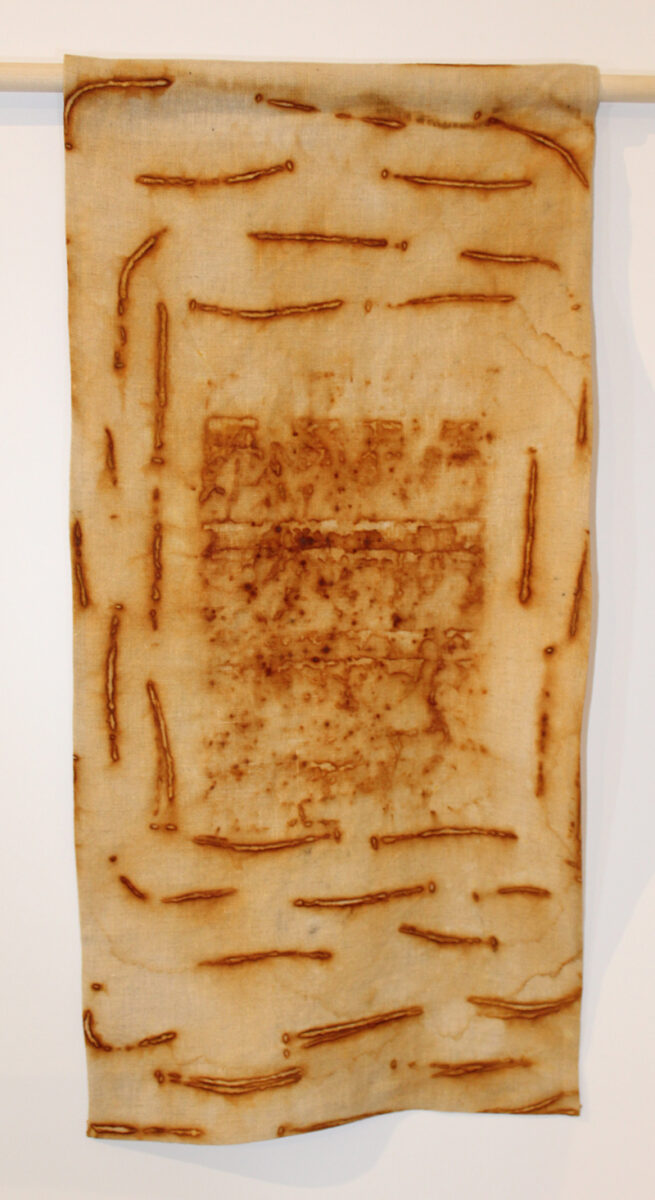
Josephine Clarke is a textile artist whose expertise lies in the use of plant-based dyes and pigments. After earning her Bachelor of Design in fashion design and technology at Kwantlen Polytechnic University, she was accepted as an artist in residence with the Cape Breton Centre for Craft and Design. She teaches classes with the CBCCD, as well as community organizations such as CEPI-Bras D’or Lakes. Her practice is centered around the use of natural and plant-based dyes, and zero waste methodology. She makes use of materials overlooked or discarded.
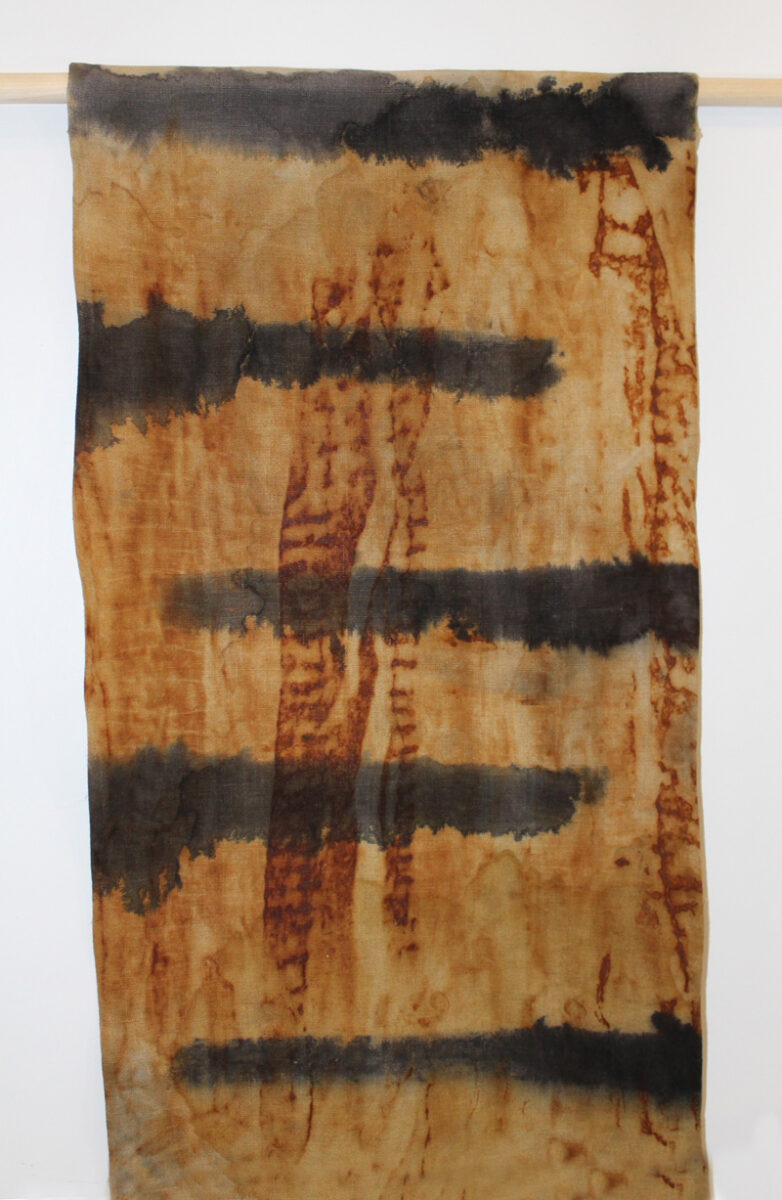
Located inside the Visual Arts Nova Scotia office at the Halifax Seaport since 2000, the Corridor Gallery is complimented by simple yet modern architectural elements and an array of current cultural activity in the Cultural Federations of Nova Scotia office. The Corridor Gallery is located at 1113 Marginal Road, Kjipuktuk/ Halifax, NS, situated on unceded Mi’kmaq territory.
Due to COVID-19 the VANS office will be open to the public by appointment during this exhibition. All visitors to the office must wear a mask, practice distancing, and sanitize hands upon arrival. In consideration of the size of the office and the Corridor Gallery, only two visitors are permitted at a time.
Visual Arts Nova Scotia advances the visual arts through leadership, education, and communication.
High resolution image for press available via Dropbox. See more of Josephine Clarke’s work on her website and josephineclarketextiles.com or her Instagram: @josephineclarketextiles.
For further information or to make an appointment to view the exhibition please contact:
Carri MacKay
Programming Coordinator, Visual Arts Nova Scotia
communicate@visualarts.ns.ca | www.visualarts.ns.ca

